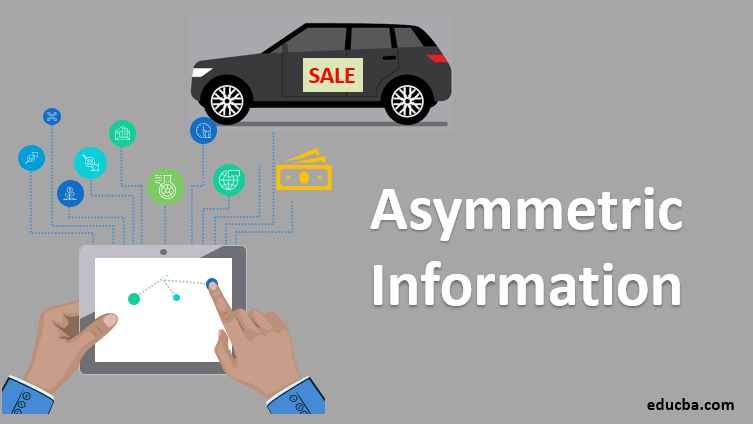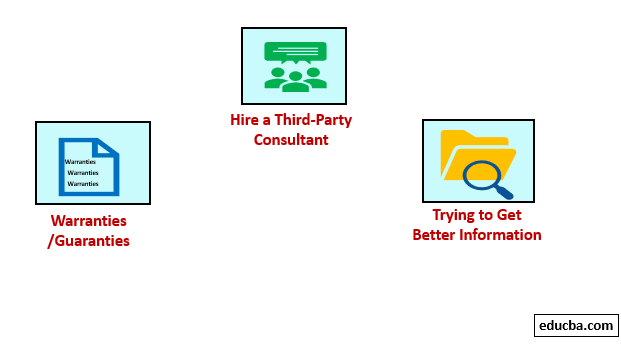Updated July 25, 2023

Definition of Asymmetric Information
Asymmetric information is a situation in which one party possesses better information about the transaction than the other party. Because of this additional or better knowledge, one party has a significant advantage over another party.
This can happen when a seller who knows better sells its goods or services to the buyer. Usually, information asymmetric exists in all natures of transactions.
Asymmetric Information Example
- A seller selling his second-hand car will have more information about the car’s issues, which gives him an advantage in the transaction.
- The insured party may not provide all the past health issues in insurance policies to obtain a less costly insurance service. This will be a disadvantage for the insurance company.
Types of Asymmetric Information
Given below are the types mentioned:
- Adverse Selection: Adverse Selection is the condition in which sellers have more and better information about the product than the buyer or vice versa. This lack of information may cause taking bad decisions. To avoid adverse selection, one party identifies a riskier party and charges more money or provides fewer services. For example, in the insurance business, insurance companies charge more premiums to people or companies in risky or dangerous businesses.
- Moral Hazards: Moral hazard occurs when one party changes its behavior after a deal gets struck, which may affect another party negatively. While adverse selection is a situation before the deal, adverse selection is a post-deal situation. For example, a house owner who has just now taken insurance against theft. Before this insurance, he used to be very careful, but after this insurance, he just left the door unlocked and does not care about the house because of the insurance.
Ways to Solve the Asymmetric Information Problem
Below are three different ways to solve the asymmetric problem as follows:
- Warranties/Guaranties: To solve the asymmetric information problem, parties can have various warranties or guarantees against the information they have doubts about. This can be useful in setting the price of goods also.
- Hire a Third-Party Consultant: Parties can hire third-party consultants who are more experienced in these kinds of transactions. For example, parties can hire a more experienced mechanic in a secondhand car deal. A mechanic can examine the condition of a car in a thorough way and can tell the issues with the car.
- Trying to Get Better Information: Parties can check with other people or companies who have already done this deal. This can help get better information about the deal structure, which will help get better information about other parties.
Advantages and Disadvantages of Asymmetric Information
Advantages
Asymmetric information can have a few advantages also in broader macroeconomic terms.
- With asymmetric information, people in the economy who specialize in one field become more productive, and with that, they can provide greater value for people in other fields.
- For example, a stockbroker’s knowledge is very valuable in his field, and he can help people from other fields by investing their money in better stocks.
Disadvantages
- With asymmetric information, there can be many occurrences of fraudulent activities where one party can cause damage to other parties because of better information. For example, because of getting less information at the time of the deal, insurance companies may encounter high damages.
- In the overall economy, it increases the cost of goods or services. Parties who know that they may encounter loss in the future because of less information will already keep that into a negotiation deal, increasing the cost for other parties. This will affect the cost of that kind of transaction in the economy.
- Even after the deal, one party may change its behavior because of moral hazard, and this will affect another party.
Important Points to Note about Asymmetric Information
- This happens because one party has less information than the other parties.
- More public information and warranty/guarantee can help in overcoming this problem.
- It can cause fraudulent activities, which can cause damage to one party.
- Government laws can help in reducing the effect of Asymmetric Information.
Conclusion
Asymmetric information is a long-standing condition caused by a lack of information and less communication between parties. Two-way dialogues and better paperwork can help reduce this kind of problem so parties can reach better decisions. The government also can pitch in by making better-governing laws to ensure that this cannot impact the overall economic condition much.
Recommended Articles
This is a guide to Asymmetric Information. Here we have discussed examples, types, ways to solve the asymmetric information problem, and advantages and disadvantages. You may also look at the following articles to learn more –


